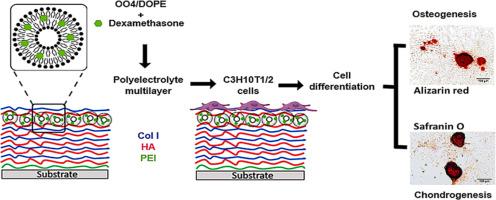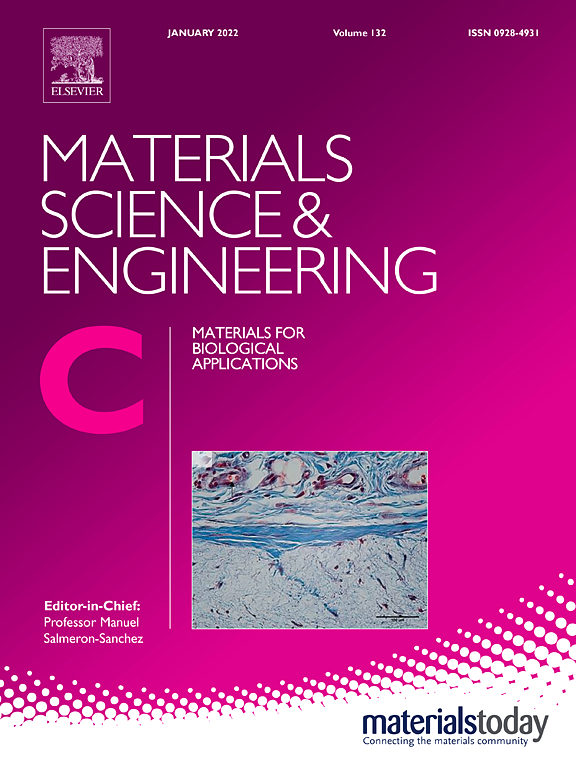Extracellular matrix-inspired surface coatings functionalized with dexamethasone-loaded liposomes to induce osteo- and chondrogenic differentiation of multipotent stem cells
Abstract
Biomimetic surface coatings can be combined with conventional implants to mimic the extracellular matrix (ECM) of the surrounding tissue to make them more biocompatible. Layer-by-layer technique (LbL) can be used for making surface coatings by alternating adsorption of polyanions and polycations from aqueous solutions without need of chemical reactions. Here, polyelectrolyte multilayer (PEM) systems is made of hyaluronic acid (HA) as polyanion and Collagen I (Col) as polycation to mimic the ECM of connective tissue. The PEM are combined with dexamethasone (Dex)-loaded liposomes to achieve a local delivery and protection of this drug for stimulation of osteo- and chondrogenic differentiation of multipotent stem cells. The liposomes possess a positive surface charge that is required for immobilization on the PEM. The surface properties of PEM system show a positive zeta potential after liposome adsorption and a decrease in wettability, both promoting cell adhesion and spreading of C3H10T1/2 multipotent embryonic mouse fibroblasts. Differentiation of C3H10T1/2 was more prominent on the PEM system with embedded Dex-loaded liposomes compared to the basal PEM system and the use of free Dex-loaded liposomes in the supernatant. This was evident by immunohistochemical staining and an upregulation of the expression of genes, which play a key role in osteogenesis (RunX2, ALP, Osteocalcin (OCN)) and chondrogenesis (Sox9, aggrecan (ACAN), collagen type II), determined by quantitative Real-time polymerase chain reaction (qRT-PCR) after 21 days. These findings indicate that the designed liposome-loaded PEM system have high potential for use as drug delivery systems for implant coatings that can induce bone and cartilage differentiation needed for example in osteochondral implants.


 求助内容:
求助内容: 应助结果提醒方式:
应助结果提醒方式:


